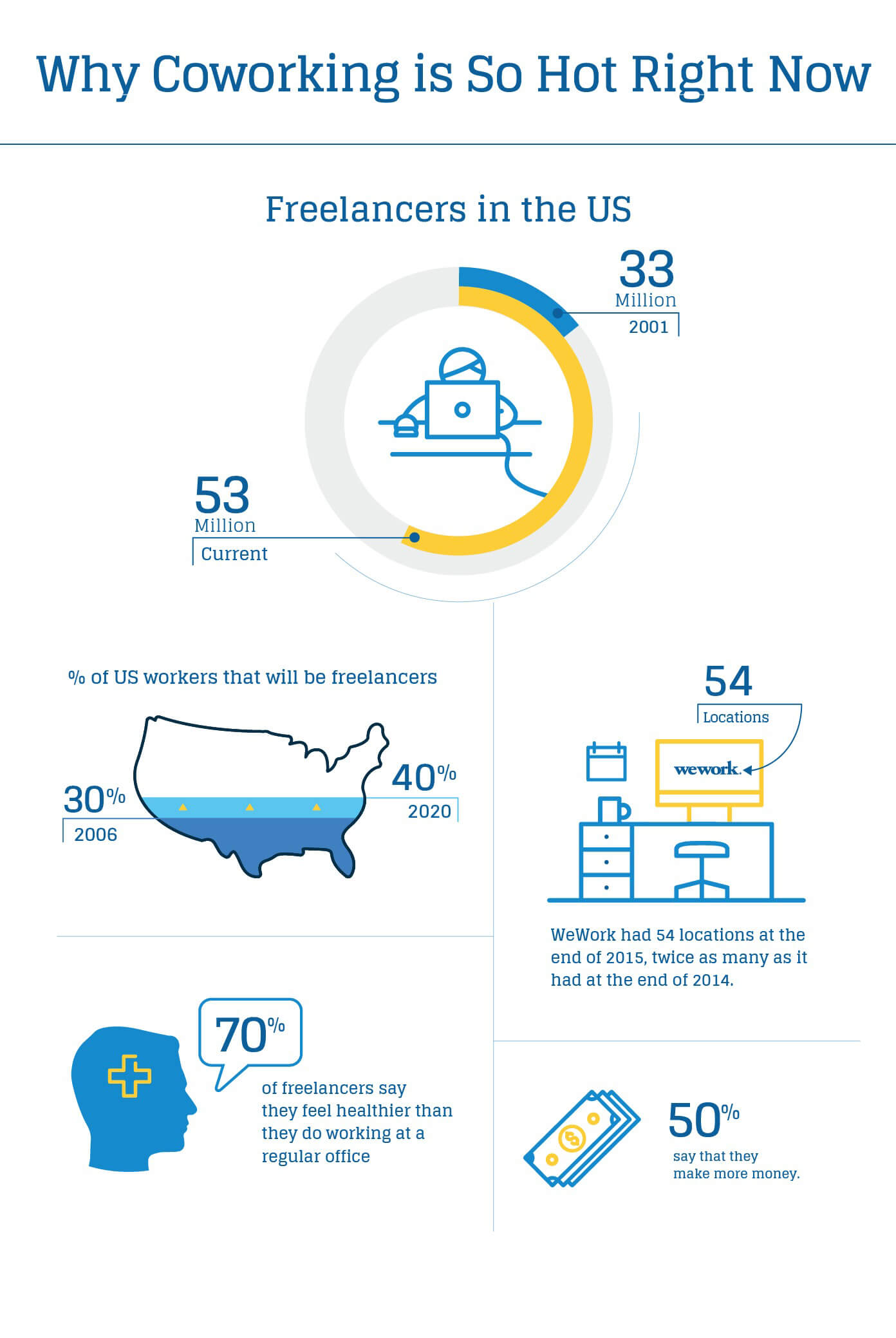The future is freelance: Gig economy pros and cons
 Learn the gig economy pros and cons of hiring freelancers to create a pool of skilled workers consisting of employees, partners, and subcontractors.
Learn the gig economy pros and cons of hiring freelancers to create a pool of skilled workers consisting of employees, partners, and subcontractors.
In 2001, author Daniel Pink released a book called Free Agent Nation that cataloged the rise of independent contractors, which brought about the idea of co-working.
Though telecommuting had been discussed since the early 1970s, suddenly it was a reality.
Not everyone was on board for the revolution. In a review of the book, The New York Times disputed figures Pink cited that showed growth in the number of independent contractors in the U.S. and pointed out that, as a former speechwriter for Vice President Al Gore, Pink had more opportunities than most. “The world of free agents — a world in which they are free to hustle until they die — does not sound like good news at all,” the review concluded.
The debate continues to this day. Are workers in the so-called service economy taking advantage of the freedom that such situations afford or are they victims of an exploitative system?
Whatever the case, the number of freelancers keeps rising. In 2014, a full one-third of U.S. workers were freelancers, according to the Freelancers Union. While it’s not clear if this has been a boon to workers overall, it has definitely been good for some companies offering co-working spaces.
The biggest beneficiary so far has been WeWork, a 6-year-old company that is now worth $16 billion. That has caught the attention of the office supply superstore Staples, which has partnered with Boston’s Workbar to turn three locations in that area into communal work spaces.
Each of the 2,500-3,500 square-foot facilities will host 45 to 50 workers and will offer the usual amenities, including Wi-Fi and printers. The chain will require weekly and monthly memberships to use the facilities.
 Learn the gig economy pros and cons of hiring freelancers to create a pool of skilled workers consisting of employees, partners, and subcontractors.
Learn the gig economy pros and cons of hiring freelancers to create a pool of skilled workers consisting of employees, partners, and subcontractors.
Mirroring the rise of Free Agent Nation, Starbucks has long capitalized on the trend by encouraging patrons to stay as long as they like. In 2010, the chain also began offering free Wi-Fi via AT&T (since replaced by Google), which made it possible to spend all day there getting work done – as long as your work could be performed on a laptop.
While Starbucks and other places with free Wi-Fi are good in a pinch, they’re not practical for many freelancers. The environment is usually too loud for phone calls and the combination of music, chatter, and coffee bean grinding sounds unprofessional. Arranging work meetings at Starbucks also doesn’t project the most professional impression, and if you need anything printed, you are out of luck.
Hence the appeal of co-working spaces: WeWork’s plans run from $220 for a “hot desk” at any available location to a private office for $450.
For that price, you also get a solid internet connection, phone booths for calls, printers and free beer on tap(!) Members also have the opportunity to host events or snag a conference room for an important meeting.
For those who lack a home office, have a small apartment, or just dread the solitude of working solo, there’s great appeal to such places for gig workers.
 Employee well-being is good for employees and for business. Discover the top tips to support remote employee wellness in a WFH-friendly world.
Employee well-being is good for employees and for business. Discover the top tips to support remote employee wellness in a WFH-friendly world.
The movement has its critics. Just as The New York Times jeered Daniel Pink in 2001, The Wall Street Journal was quick to point out that Regus received hype similar to WeWork’s in 2000. Regus just recently climbed back to its IPO price from 15 years ago. Analysts fret that a similar tech industry bust could torpedo WeWork.
Proponents, however, say that WeWork is merely an extension of the sharing economy, a movement exemplified by Uber and Airbnb, which supply rides and vacation lodgings, respectively, in a similar way.
Illustrating how far you can make the comparison, last year Fast Company profiled Hoffice, a Swedish company that uses people’s apartments for coworking. As the story notes, “Everyone in the group works in 45-minute shifts, based on research suggesting people can’t concentrate for more than 40 minutes at a time. When the shift ends, an alarm clock buzzes, and the group takes a short break to exercise or meditate.”
It’s hard to imagine that happening at Staples. However, the chain would be wise to observe the cultivated air of fun and freedom that places like WeWork provide. As opposed to merely offering utilitarian surroundings, places like Grind have also emulated the look and feel of Internet startups with bright colors, subdued lighting, good free coffee and a refusal to take themselves too seriously.
The ambiance is important since such workers aren’t just looking for a desk, but are looking to feel like they’re part of something bigger, the Free Agent Nation perhaps.